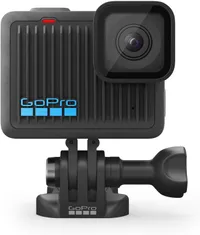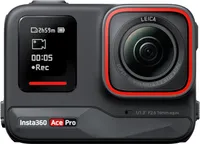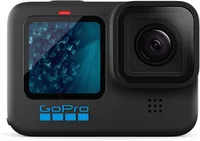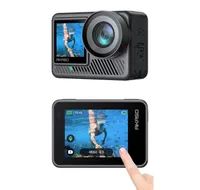Best action cameras in 2025
We’ve reviewed the best action cameras for capturing all your outdoor adventures.
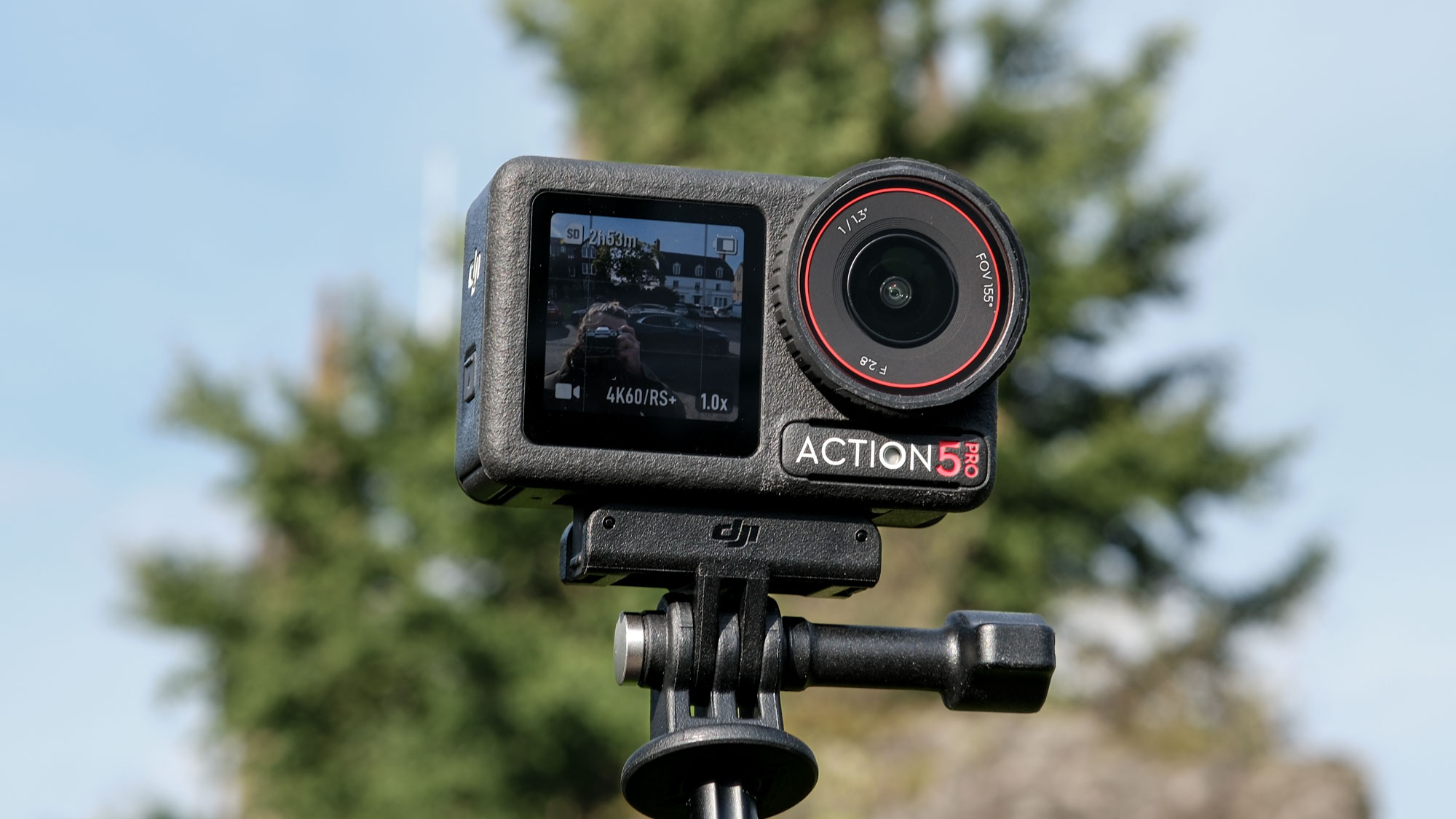
Owning one of the best action cameras is crucial if you want to capture your daring exploits. After all, you probably can't take your $2,500 mirrorless camera diving with sharks, and I doubt many people would want to use their brand new iPhone 16 Pro Max to film themselves diving off a cliff into the ocean.
You need a specialized camera to keep up with specialized activities, and that's where action cameras come in. The best action cameras pack beautiful 4K, 5.3K and even 8K footage that's worthy not just of YouTube, but television screens. They're also rugged, meaning they can stand up to the abuse of the elements, and should pack excellent battery life so that you can film your entire adventure. Of course, they also need to be compact enough to mount anywhere, whether it's the peak of your cap or the handlebars of your motorcycle.
They aren't just for daring doers though: action cameras are also perfect for vloggers and content creators, and many of the best action cameras come with those users also in mind. Take our favorite action camera, for example, the DJI Osmo Action 5 Pro, which can hook up wirelessly with DJI's vlogging microphones.
After testing dozens of models all the latest and greatest models (and some that aren't so great), our favorite, as I mentioned above, is the DJI Osmo Action 5 Pro. It packs many similar features to its rival, the GoPro Hero13 Black, all for $50 less. DJI has also upgraded the waterproofing, sensor and battery life over the predecessor. It's a great action cam, but is it the right pick for you?
Read on for my pick of the best action cameras you can buy.
The quick list
Here's a quick overview of the action cameras you can buy right now based on our testing and reviews. Keep up on scrolling if you want to see our in-depth analysis of all the top action cameras for every requirement.
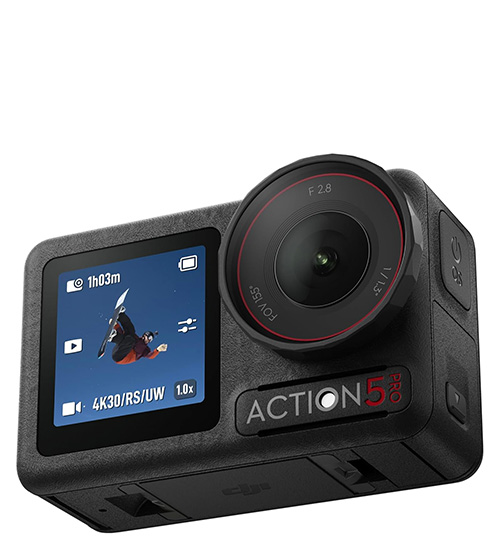
The best action camera overall
The DJI Osmo Action 5 Pro is the best action camera overall, packing beautiful 4K, excellent stabilization and a range of features well-suited to content creators and casual shooters. Better yet, it costs $50 less than a GoPro Hero13 Black.
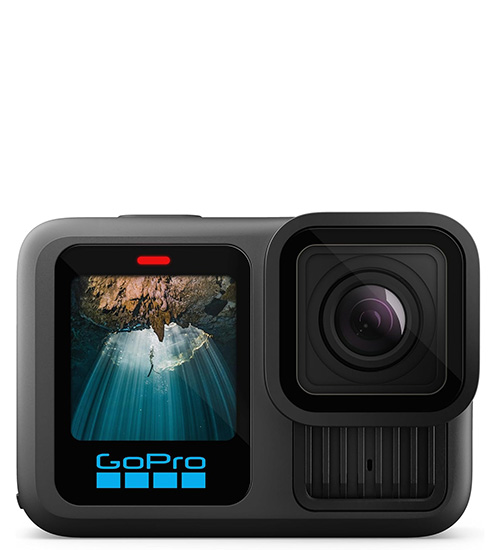
Best for pros
The GoPro Hero13 Black just misses out on our top spot, but is the best for professionals and serious shooters thanks to its 5.3K recording, awesome stabilization and new lens mods, which allow for lots of creativity.
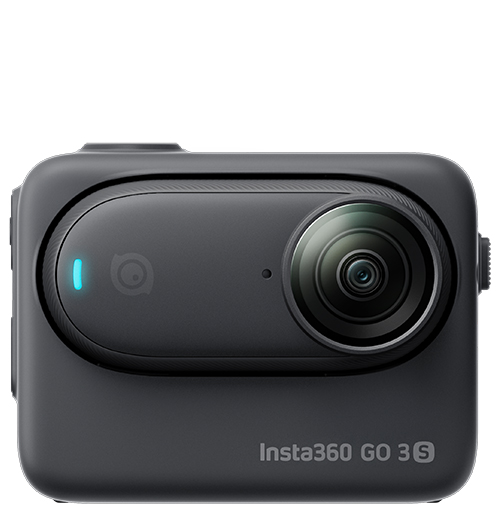
The best small action camera
If you're looking for a tiny, go-everywhere action camera, the Insta360 Go 3S is perfect. Strap it to your bike, your hat or even your cat and it'll record in stabilized 4K. There's no expandable storage though, and no external mic input, so it's more suited to casual adventurers.
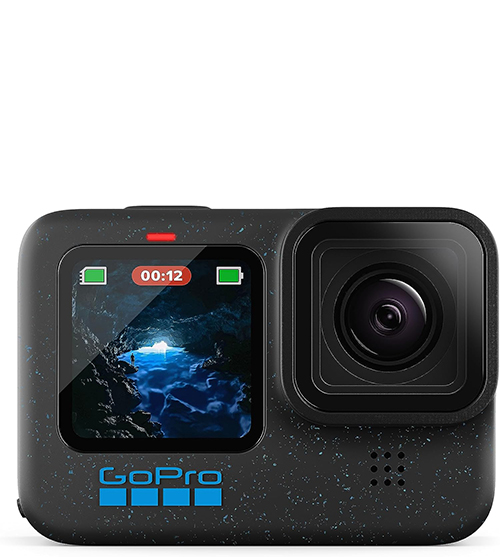
The best older GoPro
Despite no longer being the flagship, the GoPro Hero12 Black is still an incredible action camera: beautiful 5.3K video, image stabilization and water resistance to 33 feet. Thanks to the Hero13, the Hero12 Black is now cheaper than ever.

The best budget camera
The DJI Osmo Action 4 is now the best budget camera thanks to its successor's. It features a large sensor, 4K/120fps and water resistance to 59 feet. We particularly love the range of accessories DJI offers.
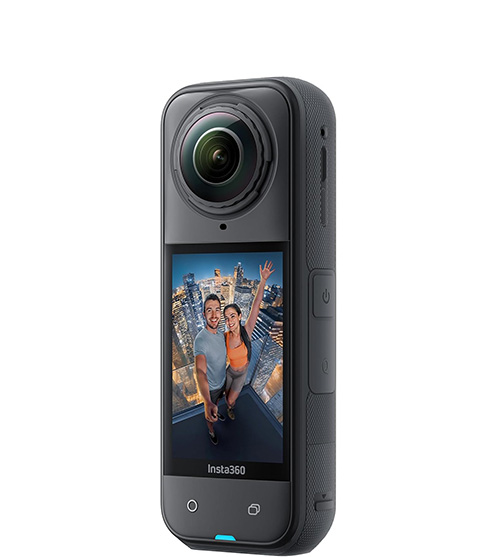
Best 360 camera
The Insta360 X5 is the best 360 camera ever made, let alone the best one you can buy. Its 8K/30p results in up to 4K reframed footage, the highest of any 360 camera, and its stabilization and battery life are great.

Pete heads up Tom's Guides cameras coverage, as well as leading the site's reviews team. Pete is Tom's Guide's main action camera tester, and goes hands on with every action camera release, from budget cams all the way up to flagship models from GoPro, DJI and Insta360. As reviews editor, Pete is a highly experienced tester, and puts action cameras through their paces, testing them in a variety of settings to evaluate their features. Pete's favorite action camera right now is the DJI Osmo Action 5 Pro. He says: "DJI has really knocked it out the park with this one, packing loads of pro features and fixing many of the Osmo Action 4's issues while undercutting the GoPro Hero13 Black by $50!"
The best action cameras in 2025
Why you can trust Tom's Guide
Here are my picks of the best action cameras you can buy. Each one of these cameras has been thoroughly tested by us, and you can find the links to our full reviews after each entry. That means you can rest assured all of these action cameras come with the Tom's Guide stamp of approval.
The best action camera overall
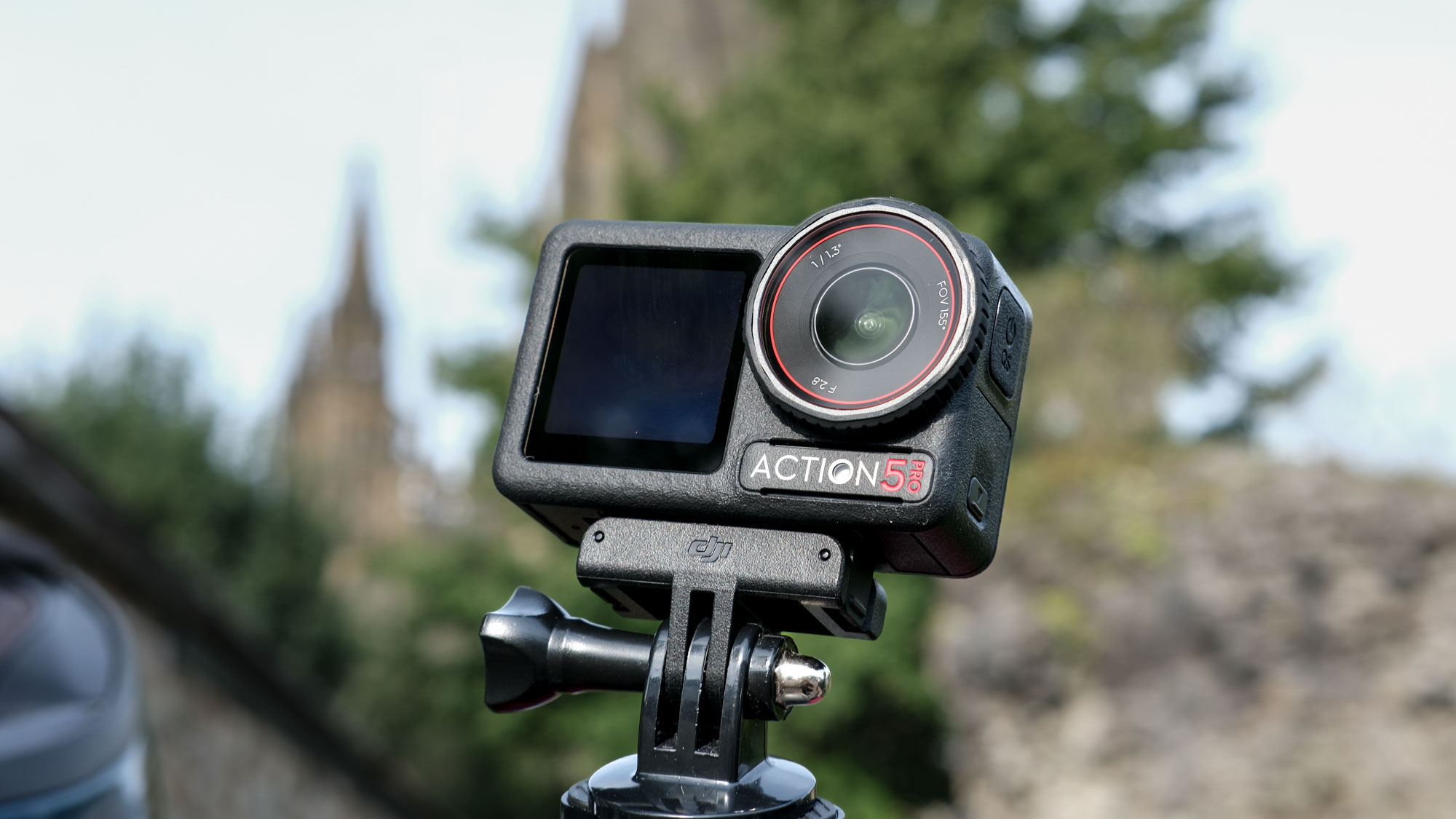
Specifications
Reasons to buy
Reasons to avoid
The DJI Osmo Action 5 pro is the best camera for most people. It's a real close race between this camera and the GoPro Hero13 Black, but if you're a casual video shooter, a content creator or you need a rugged, professional action camera to shoot 4K footage, this camera pips the GoPro to the post.
The OA5 Pro shoots 4K at up to 120fps, and while YouTube still maxes out at 4K, that's all casual shooters or content creators need. The GoPro Hero13 Black's 5.3K max res, and Insta360 Ace Pro's 8K are only really useful if you're going to output oversampled 4K in post for marginally sharper footage — something most users won't need to do, as standard 4K still looks fantastic. So why spend the $50 extra on a GoPro?
It isn't all about resolutions though. I put the OA5 Pro through its paces during testing and was mightily impressed with the performance. DJI has fixed the issues that held the Osmo Action 4 back: stabilization is improved thanks to an upgraded imaging sensor which allows for faster shutter speeds; and the janky DJI Mimo smartphone app has had some polish applied to bring it up to spec.
Meanwhile, the camera has received loads of genuinely useful features, especially for content creators, including bright OLED displays, subject detection AF for vlogging, and 47GB of internal storage for over an hour of 4K without a microSD card — none of which the Hero13 Black has. There's now HDR HLG and SDR Log recording to maximise dynamic range capture, too. DJI has boosted waterproofing to an insane 65 feet, or 20 meters, and increased the battery capacity to 1,950mAh resulting in 112 minutes of 4K/60p in my testing. That's double the waterproof rating and over 30 minutes more recording time than the GoPro Hero13 Black.
And of course, being a DJI product, the OA5 Pro benefits from DJI's best-in-class internal audio capture, plus wireless hookup with the fantastic DJI Mic 2 microphone — already a very popular mic with content creators.
What didn't I like in testing? Pro shooters might want the extra res of rivals and, well, that's really about it. This is easily the best action camera DJI has ever made, well and truly closing the gap to GoPro.
Find out more in my full DJI Osmo Action 5 Pro review.
The best action camera for pros
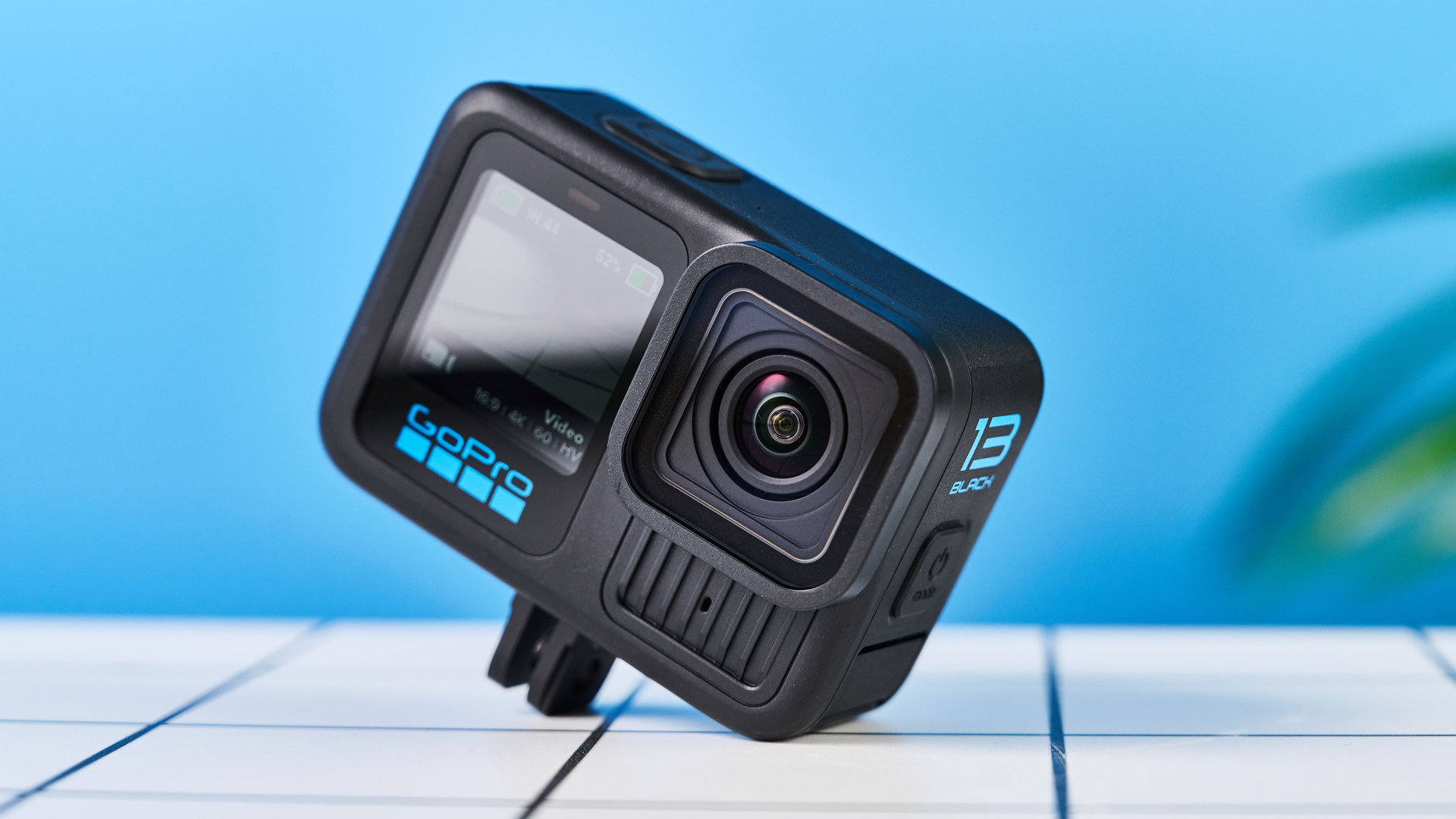
Specifications
Reasons to buy
Reasons to avoid
The GoPro Hero13 Black is the best action camera for professionals and serious shooters for a few reasons. Firstly, there's the 5.3K maximum resolution, which is higher than the Osmo Action 5 Pro's 4K. This will allow you to oversample footage in post for sharper 4K. Secondly, there are the new Lens Mods, released with and for the Hero13 Black (they won't work on older models) — there's an anamorphic mod for cinematic widescreen video at native resolutions, macro and ultra wide angle mods, plus ND filters for better control over exposure. As with the OA5 Pro, the Hero13 Black also sports HDR HLG and SDR Log profiles for wider dynamic range capture in HDR and SDR, plus 10-bit color. Naturally, as this is a GoPro, the Hero13 Black also brings fantastic image stabilization and beautiful image quality straight out of the box.
In testing, I absolutely loved how well the Hero13 Black stabilized footage, even in super challenging scenarios like when strapped to a dog, walking or when mounted to handlebars. DJI has caught up now in regards to stabilization, but the GoPro still edges it. I also really enjoyed using the GoPro's awesome long exposure modes to shoot timelapse and light trail content. There's also the GoPro Quik app to consider, which is a solid performer, if not quite as innovative or feature-packed as Insta360's smartphone app. The Hero13 Black also finally sees magnetic mounting coming to the GoPro lineup, which has been sorely missed for a while now given rivals have been implementing similar systems for some time.
There are a few areas where the Hero13 Black disappoints versus the competition. GoPro increased battery capacity in the Hero13 Black to 1,900mAh from 1,720mAh in the Hero12 Black. That's good, but in my testing at 4K/60p, it still fell over 30 minutes short of the Osmo Action 5 Pro, managing 80 minutes. GoPro has also only made minor alterations to the Hero line for this iteration, which means the same 33ft waterproofing, the same LCD screens and the same $399 price point. Those aren't bad specs, but feel a bit lazy given DJI upgraded all of those areas and more in the OA5 Pro, while reducing the price. GoPro has consistently topped this list in the past, but it feels like they've started resting on their laurels.
All the same though, the Hero13 Black is a ferocious action camera, with top line specs that are well-suited to professionals needing a b-cam or rugged vlogging camera.
Find out more in my full GoPro Hero13 Black review.
The best small action camera

Specifications
Reasons to buy
Reasons to avoid
If you're after something small, you can't really beat the Insta360 Go 3S — a tiny, thumb-sized action camera that builds upon the great reputation of its predecessor, the Go 3. This action camera is perfect for people who want an unobtrusive camera to capture beautiful 4K footage. It's ideal for casual shooters who are trekking, cycling or playing sports, as it'll sit easily on a cap peak or attach effortless to your short without sagging (that's how light it is). Its size and loop-recording mode also make it ideal if you want an action cam that can double as a dashcam.
I tested the Go 3S extensive, and it's older sibling, the original Go 3, and loved them both — although the Go 3S comes out easily on top. The Go 3S offers up to 4K video at 30fps, as well as FreeFrame video, where you can change the aspect ratio of your footage after shooting. This is a step up over the original Go 3, which could only shoot up to 2.7K (or 1440p in FreeFrame mode). It's water resistant down to 33 feet without its Action Pod (which is only splash proof), and small enough to take pretty much everywhere. What's more, Insta360 offer a range of awesome accessories to allow you to use the tiny Go 3S in pretty much any scenario you can imagine. It's truly designed to go on any adventure with you.
Thanks to the Action Pod, the Go 3 is a bonafide vlogging tool — featuring a flip up screen and up to 120 minutes of battery life at 4K.
However, the size of the Go 3S means some sacrifices have had to be made. There's no removable storage and no external microphone support. As such, if you're looking to shoot professional-grade video, you'd be better off looking at the DJI Osmo Action 5 Pro, which costs a similar amount of money at the expense of size.
Find out more in my full Insta360 Go 3S review.
The best older GoPro
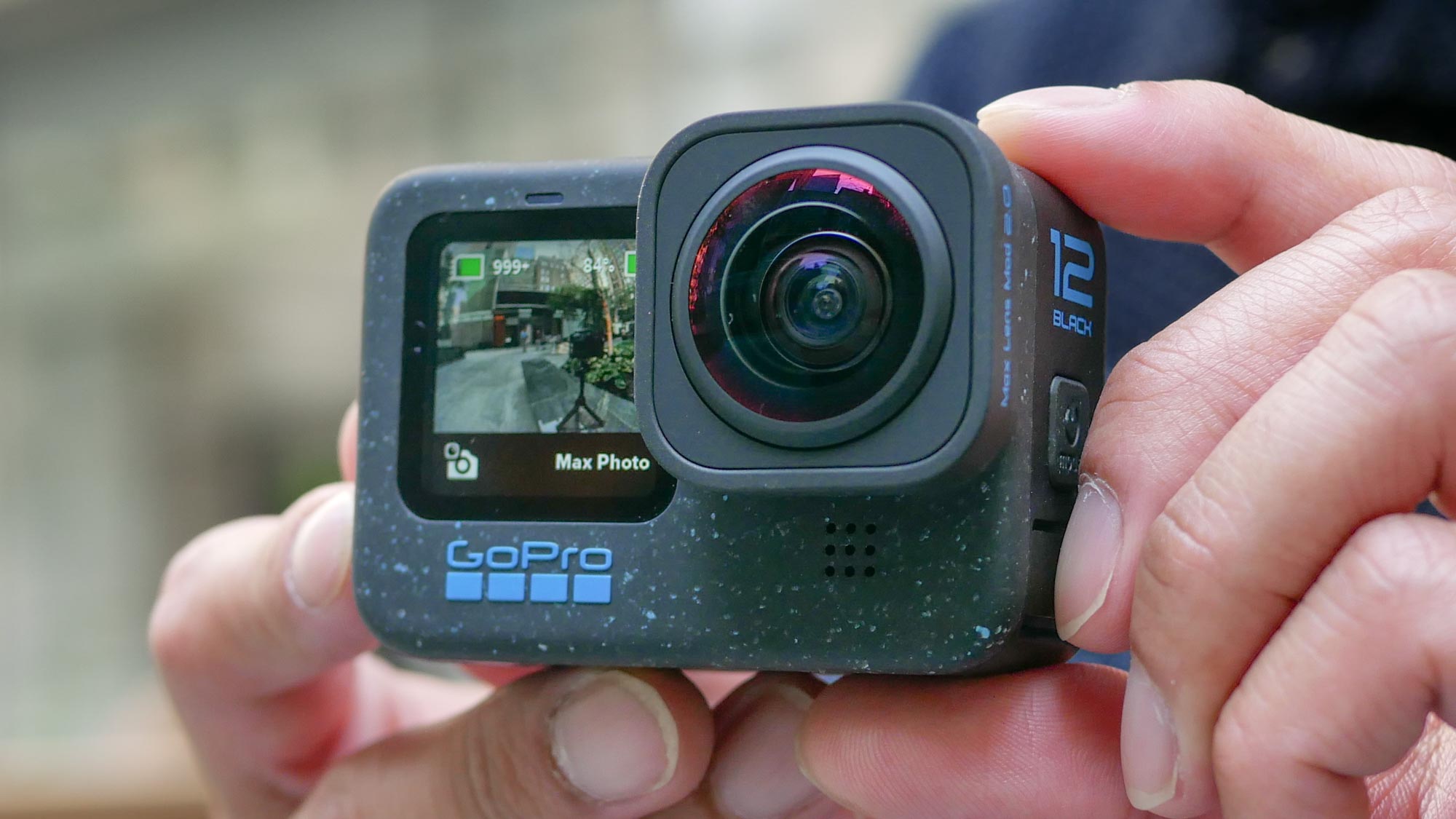
Specifications
Reasons to buy
Reasons to avoid
With the launch of the Hero13 Black, the outgoing GoPro Hero12 Black becomes the best older GoPro, even though it was only launched in 2023. Thanks to the new model, though, you can now pick up a Hero13 Black for well under $300, making this a real steal. That's because the Hero13 Black is essentially the same camera, using the same sensor, the same stabilization system and essentially the same body, except for a minor face lift around the front screen. That means you still get 5.3K/60p video, HyperSmooth 6.0 and GoPro's generally outstanding video performance, all for way less than the Hero13 Black.
The Hero12 Black also utilizes the same battery and shell as many older GoPros, like the Hero10 Black. While certain accessories will fit the new GoPro Hero13 Black, some won't, so if you're upgrading from an older model, this is the one to go for.
In our testing, we loved the Hero12 Black's phenomenal image quality and stabilization — de rigueur for GoPro. We also loved the minor updates over the prior model, the Hero11 Black, including 5.3K/60p versus 5.3K/30p, and the introduction of Bluetooth headphone support for audio recording.
Water resistance is the same as the new Hero13 Black at 33ft (10m), as are the screens and dimensions. The only things you're missing out on over the newer model are the magnetic mounting system, new Lens Mods and some pro features like HDR HLG recording. This is still a totally relevant action camera, with plenty of support from GoPro for years to come in regards to firmware and accessories. So, if you want a GoPro but want to save some cash, this is where your money should go.
Find out more in our full GoPro Hero12 Black review.
The best budget action camera
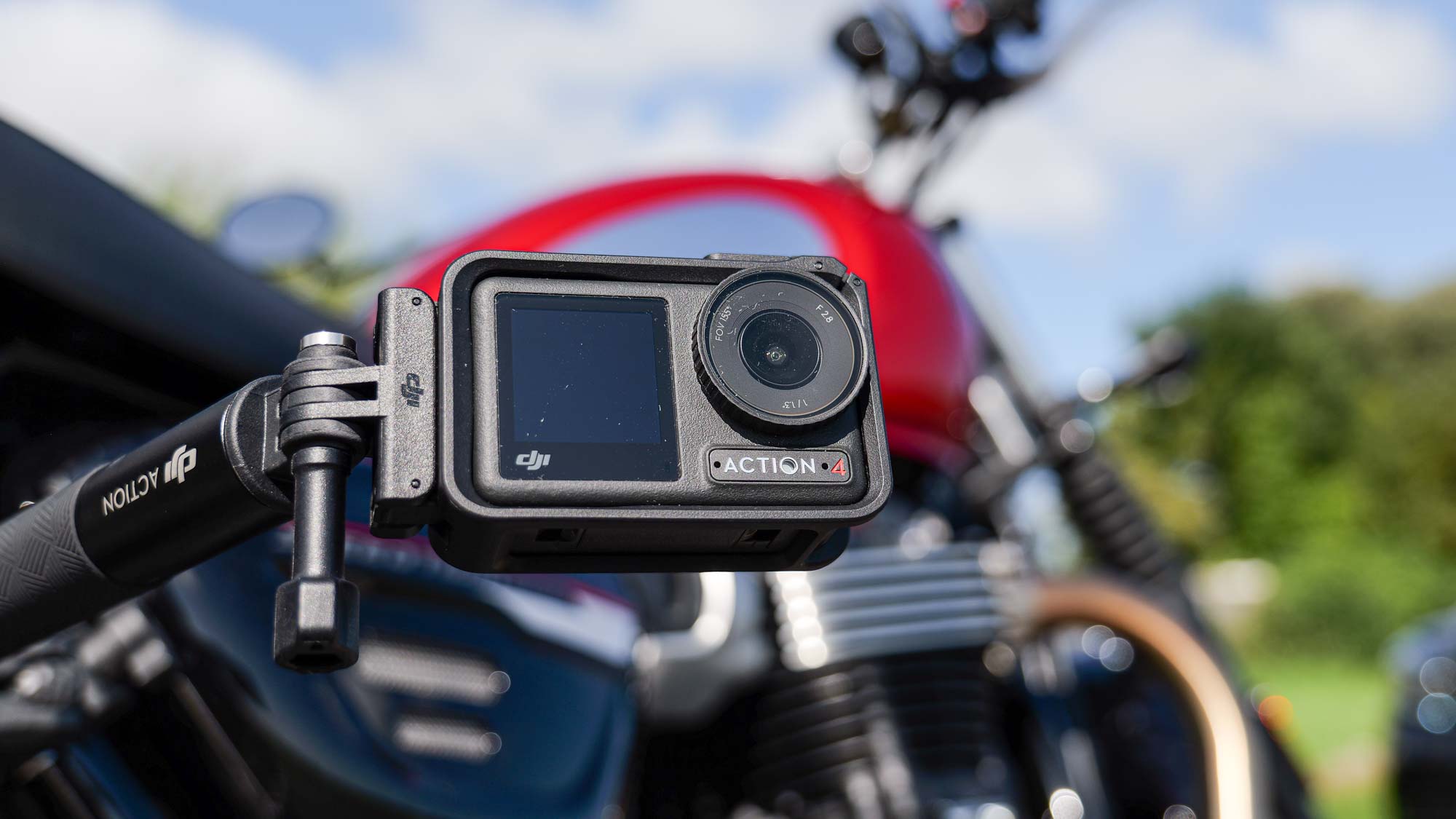
Specifications
Reasons to buy
Reasons to avoid
With the release of the Osmo Action 5 Pro, the DJI Osmo Action 4 is my pick of the best budget action cameras thanks to prices dropping. You can now pick up an Osmo Action 4 for as little as $249, or £229 in the U.K., and I'm only expecting prices to drop further as we make our way into 2025. If you wan't beautiful 4K video but want to save almost a couple of hundred bucks over a new GoPro or DJI, this is the action camera to opt for.
I tested the Osmo Action 4 thoroughly when it launched, and absolutely loved its beautiful image quality, not to mention its surprisingly strong internal audio quality. This camera can also be hooked up wirelessly to DJI microphones, making it a great choice for content creators who want to avoid lots of cables or are already invested in DJI gear. While its waterproofing isn't quite as good as the Osmo Action 5 Pro, the Osmo Action 4 is still rated down to 59 feet, which beats everything else from GoPro and Insta360, making it great for rugged adventures in challenging conditions. If you edit your footage in post, the OA4 also offers D-Log recording for wide dynamic range capture, and there's 120fps recording for slow motion footage too.
In testing, I wasn't so keen on the stabilization, which performed a little worse than GoPro and Insta360 cameras, resulting in some shaky footage. If you're a serious shooter, you might also be put off by the max res of 4K, as this means you can't oversample 4K footage in post as you can with the 5.3K GoPro cameras. All in all, though, this is a lot of camera for your money, and the price is only going to drop further.
Find out more in my full DJI Osmo Action 4 review.
The best 360 camera
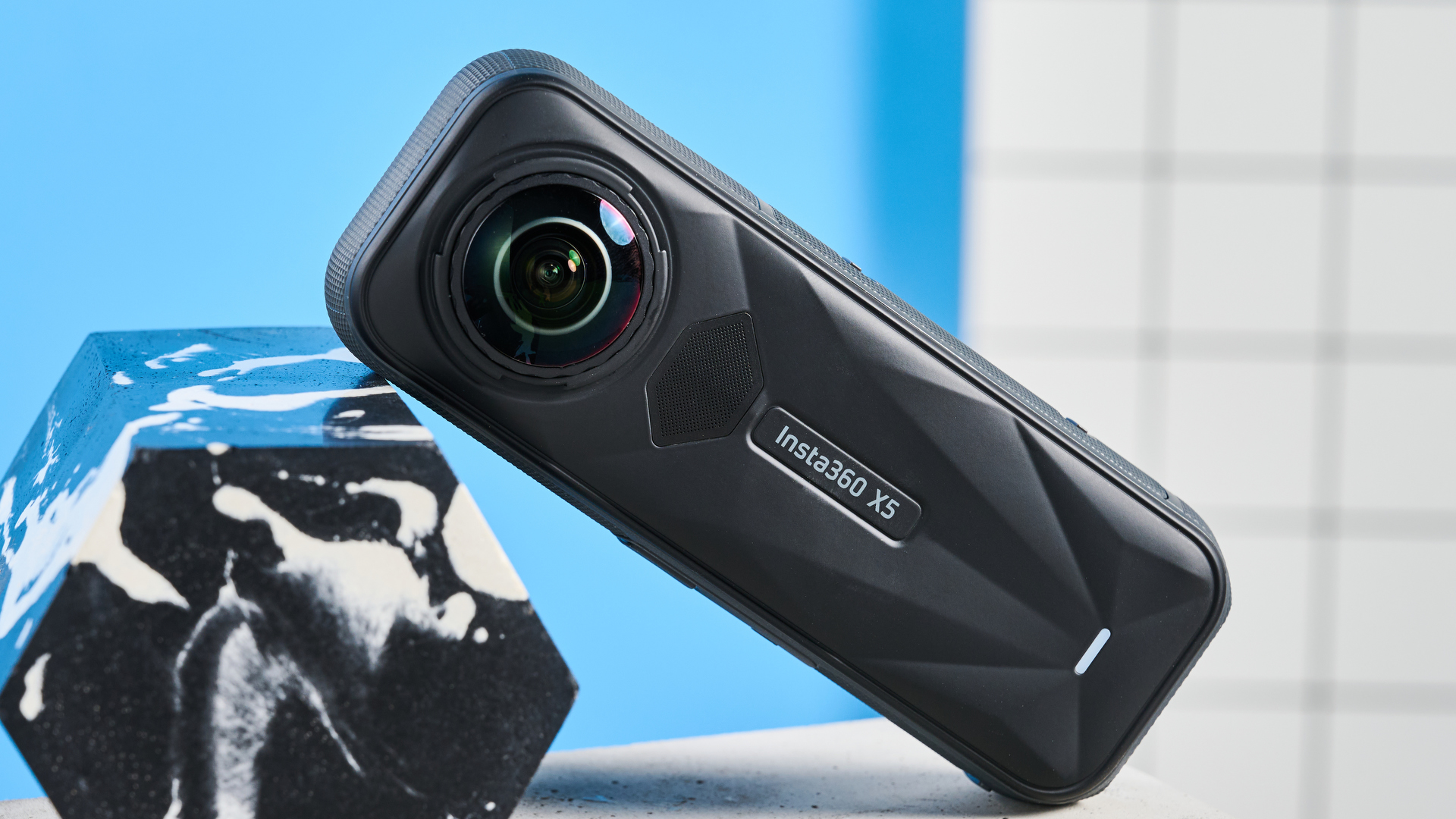
Specifications
Reasons to buy
Reasons to avoid
The Insta360 X5 was a camera the Chinese action cam manufacturer Insta360 didn't need to make. See, the X4 was already the best 360 camera out there and it wasn't even a close contest. No other camera could reframe in 4K as is possible with the X5 and older X4, and that's thanks to the 8K/30p capabilities of both.
I spent a good chunk of time putting the X5 through its paces, and believe me, it doesn't disappoint. There's the 8K maximum 360 resolution, which allows you to reframe in up to 4K/30p, pls 4K/60p standard single-lens recording, which produces footage akin to a traditional action camera. There are the awesome effects and easy editing via the Insta360 smartphone or desktop apps. And Insta360's usual fantastic stabilization.
What was seriously impressive about this camera, though, was how many useful changes Insta360 made versus the X4 — the brand was not happy to rest on its laurels. The X5's microphone is a huge step up over the X4, thanks to a new physical wind guard and better wind reduction algorithms. In testing, motorcycle footage audio was astoundingly clean and free of wind buffeting — better even than some standalone microphones.
Insta360 also boosted the sensor size over the X4, and again I was super impressed with how well the X5 performed when shooting some footage after dark. The sky was brightened, and the picture remained acceptably sharp despite in-camera noise reduction being applied.
Insta360 also moved to a modular lens system with the X5. Nothing like the Hero13 Black's creative style modular lenses. Rather, you can simply replace the X5's lenses with an affordable kit if they take a stone to the glass. This is a big issue with these cameras, which is why the brand previously sold lens guards, which always affected image quality. Well, no more, as you can just buy a new lens if the worst should happen.
Battery life has also been improved in 8K versus the X4, although single lens battery life decreased versus the previous model in my testing. As this is a 360 cam though, 360 performance is what matters most.
The downsides? The same as the X4 really: the X5 is hella pricey compared to a standard action camera but, well, it isn't a standard action camera, so that makes sense. If you need a 360 camera and have the budget, this is the only one to go for.
Find out more in my full Insta360 X5 review.
Also tested
GoPro Hero: The smallest GoPro around
After testing this camera for my GoPro Hero review, it hasn't taken the spot of best small action camera. It shoots nice 4K/30p and has decent battery life, but very little else. Its stabilization is in-app only, and it offers very few features compared to the Insta360 Go 3S. It is a lot cheaper, but you're better off waiting for the DJI Osmo Action 4 to go on sale, where it often retails at a similar price.
Insta360 Ace Pro: 8K recording
n my Insta360 Ace Pro review, I gave this flagship action camera 3.5*. It boasts great stabilization and really awesome tracking capabilities, plus Insta360's usual incredible built quality. Its flagship feature is its 8K recording, allowing oversampled 4K output for YouTube. When launched, though, this camera cost $449, making it very pricey, and its Leica optics were a little disappointing. However, now that it's dropped to $349 with the launch of the Ace Pro 2, this is well worth considering.
GoPro Hero11 Black: A solid older GoPro
In our GoPro Hero11 Black review, we awarded 4.5* because, at the time, this was the best action camera around. It's ageing a bit now, but that doesn't make it a bad choice. This camera packs 5.3K/30p and fantastic stabilization, plus the build quality and accessories that come with owning virtually any GoPro. You can still pick this camera up from Amazon, and we've seen it drop as low as $215, which is a bargain for the performance.
Akaso Brave 8 Lite: Budget by name and by nature
In my Akaso Brave 8 Lite review, I praised Akaso for making big steps over the Brave 8, which I wasn't a fan of. The Brave 8 Lite offers decent-looking 4K footage, good battery life and passable stabilization (with a caveat), all for a very attractive price. The issues are mainly around that caveats: the stabilization does not happen in camera and is only accessible by processing in the extremely janky smartphone app. Internal audio is poor, too. In all, this camera sacrifices a little too much core performance to hit its budget, so I'd spend the extra few dollars on an Osmo Action 4.
How to choose the best action camera for you
When it comes to action cameras, GoPro is the dominant brand, and with good reason: It makes the best action cameras around, and has been for a number of years. With few exceptions, if you're thinking of buying an action camera, you should look to GoPro first, and look for the camera that best fits your budget.
In the past, we've tested a number of sub-$100 action cameras, but have found them to be average to middling at best. It's worth spending a little bit more for a reputable brand.
After that, it's a matter of choosing the specs that you want. Most action cameras will record 4K video, but only the newer models will support frame rates of more than 30 fps.
Another feature that's becoming standard is electronic image stabilization—key for when you're filming bumpy exploits, like mountain biking. However, the newer the model, the more sophisticated its motion stabilization will be, which means smoother video for you.
Action camera design has progressed to the point where most are water-resistant to around 33 feet; if you want to go any deeper, though, you'll need to get a case.
Because of the popularity of GoPros, most competing action cameras and third-party accessory makers have adopted the GoPro-style mount, two semicircular tabs that slot into add-ons such as selfie sticks, waterproof cases, and helmet mounts.
Due to their nature, some of the best action cameras are also among the best cameras for vlogging, so if that's something that interests you then they're well worth bearing in mind. How to use your GoPro as a webcam
How we test action cameras
We've got to be honest: It's a lot of fun testing action cameras, because it lets us get outdoors and go biking, skiing, swimming, and more. While we're out enjoying what Mother Nature has to offer, we put the action camera through its paces. We see how well it records video in a variety of lighting conditions; if it has features such as HDR, we see how it handles both light and dark areas in the frame. If the camera has motion stabilization, we take it over bumpy terrain to see how well it smooths things out.
During the review process, we also take a look at the camera's ease of use. As you're going to be using it in less-than-ideal environments, it should be easy to turn on and off, and start recording, even when you're wearing gloves. And, while an intuitive on-screen interface is important for any device, it's even more crucial with an action camera, as it has such a small display.
Best action cameras: FAQs
What's the difference between an action camera and a dashcam?
They're very similar, and many action cameras have dashcam modes to allow them to operate as one. Dashcams are designed specifically to be fixed in one place and record constantly while you drive or ride. This means they don't often have stabilization, and they often can't manage the same maximum resolutions as action cameras, or else they'd overheat. Dashcams also usually record over footage by default.
Action cameras are designed for content creation, and feature better quality video and optics, stabilization, and a variety of features to get creative with your video. You don't really want to use a dashcam for an action camera's role, as they aren't designed for it. As I mentioned above, though, many action cameras feature a dashcam mode where they will record on a loop.
Why are action cameras so expensive?
Firstly, the flagships are packing the latest and greatest tech that GoPro, DJI and Insta360 have to offer, so the latest models are always going to cost more than older models. As of 2025, the U.S. trade tariffs haven't helped either.
Not all action cameras are as expensive as flagships though, and there are some great budget options out there such as the DJI Osmo Action 4 and GoPro Hero (2024).
Is an action camera better than a DLSR/mirrorless camera?
That depends what you're doing. If you want to take photography seriously or shoot high quality cinematic video with different lenses, then one of the best mirrorless cameras is the right shout. Mirrorless cameras (which have replaced DSLRs) have bigger sensors, more controls and the ability to switch lenses (if you buy an interchangeable lens mirrorless camera), giving you lots more control and creative options.
If you're shooting high octane footage, especially in wet or extreme conditions, an action camera is what you need. They are rugged, waterproof and compact, so they can be mounted on a helmet or on handlebars. They also often feature stabilization deliberately designed for very bumpy footage.
Be sure to check out all of our camera picks:
Best cameras | Best DSLR cameras | Best waterproof cameras | Best point-and-shoot cameras | Best instant cameras | Best mirrorless cameras | Best cheap cameras | Best GoPro camera | Best GoPro accessories | Best drones | Best 360 cameras | Best iPhone lenses | Best iPhone tripods |DSLR vs. mirrorless | Best Nikon accessories | Best Sony a6000 accessories |Best ring lights | Best ring lights for phones | best cameras for vlogging
The best apps and software for editing, managing, and sharing your photos:
Best photo organizer apps | Best photo storage sites | Best photo editing software | Best photo editing apps | Best photo collage apps
Get instant access to breaking news, the hottest reviews, great deals and helpful tips.

Peter is a Senior Editor at Tom's Guide, heading up the site's Reviews team and Cameras section. As a writer, he covers topics including tech, photography, gaming, hardware, motoring and food & drink. Outside of work, he's an avid photographer, specialising in architectural and portrait photography. When he's not snapping away on his beloved Fujifilm camera, he can usually be found telling everyone about his greyhounds, riding his motorcycle, squeezing as many FPS as possible out of PC games, and perfecting his espresso shots.
